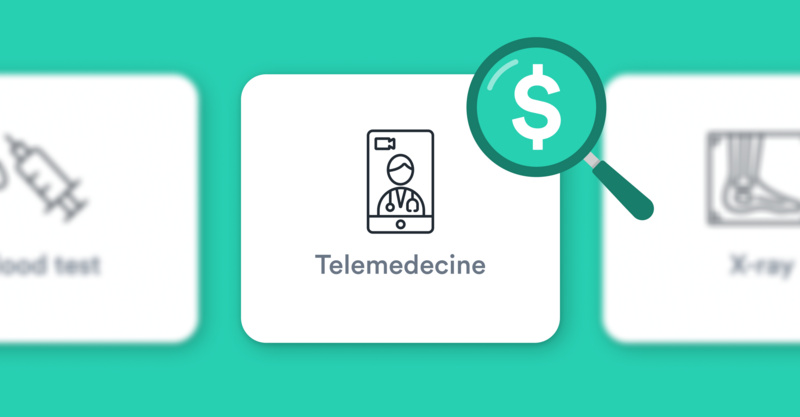Key Points
- The COVID-19 pandemic has significantly increased the use of telemedicine, with Americans' use of telehealth increasing 38 times from its pre-pandemic baseline. This shift has transformed the way people connect with healthcare providers, covering everything from medication management to chronic condition monitoring.
- Telemedicine can be a cost-effective healthcare option, especially for those with high-deductible health plans. It can help manage healthcare costs, with telehealth appointments often costing less than in-person visits. However, understanding telemed billing and potential costs under specific health insurance plans is crucial.
- Telemedicine can be used for a variety of health scenarios, including non-emergency injuries, flu symptoms, and follow-up visits. It can also be used to meet with specialists who treat chronic conditions, allowing for remote monitoring and discussion of lab results.
- Telemedicine offers several benefits, including saving time and transportation costs, and providing access to specialists across the country. This can be particularly beneficial for those in areas with provider shortages.
- Solv is a platform that offers a wide range of telemedicine services in over 40 U.S. states, providing a starting point for those new to virtual care.
Talking over FaceTime® or video chat used to be an activity reserved for a special select few with a place close to your heart: friends, family or long-distance lovers. Then came the coronavirus. Ever since, people have no longer just been chatting up their partners who live across the country — they’ve been chatting up their doctors virtually, too.
It’s no exaggeration to say that the COVID-19 pandemic has ushered in something of a telemed revolution: over the past two years, Americans have grown accustomed to connecting with health care providers by audio and video about everything from medication management to monitoring chronic conditions. Analysis from the firm McKinsey suggests that Americans’ use of telehealth has increased a whopping 38 times from its pre-pandemic baseline.
Using telemed to your advantage
Telemed can be a valuable option to help you save money on care costs — particularly for those of us with high-deductible health plans (HDHPs). Under a HDHP, people have to pay out of pocket for medical care until they hit the threshold when insurance kicks in — typically at least $1,400 for an individual and $2,800 for a family, according to Healthcare.gov.
More than half of private sector workers in the U.S. had high deductible plans in 2020, according to a ValuePenguin analysis. Now that insurance plans have reset for the new year and we are in the early part of 2022, it can be stressful when every new bill is high. After all, it may be many months before you hit your deductible and your coverage kicks in.
Those of us who work in health care know that learning to navigate health systems — and the costs associated with it — is no small feat! The Solv team has compiled some tips and tricks to help you break down when telehealth could work for you, and where to find options that meet your needs (but don’t break the bank).
Ask the hard-hitting questions
Who doesn’t want to save money? Exploring telehealth can help you find on-demand care for your family at lower price points. According to an analysis by Cigna, an insurance payer, telehealth for a non-urgent health matter cost $93 less for its members than the average cost of a visit in person. Meanwhile, telehealth for a specialist visit cost $120 less than in person, according to Cigna.
Before you can take advantage of opportunities to save, let’s make sure that you understand how telemed billing works and what a prospective appointment might cost. Here are some factors to consider and research under your specific health insurance plan — which are similar to how you can evaluate potential costs of in-person visits, too — sourced from WebMD:
- The time involved: Will this be a quick chat or require longer conversations? Billing for a visit can correspond with how long it takes the provider to treat you.
- Complexity of care: The “medical decision-making” involved in a visit can affect the cost of the appointment. If a diagnosis is straightforward, it may be cheaper.
- Volume of data review: It’s likely less expensive for a doctor to consult an x-ray or MRI report that summarizes the imaging rather than assessing the raw image, for instance.
- Audio or video: Will your visit take place over the phone or a video call? Some different insurers may cover audio and video visits differently. You don’t want to be taken by surprise, so be sure to research how this works under your insurance plan.
To go or not to go: When should you call on virtual care?
Let’s say you’re facing an unexpected medical ailment and want to know where to go. When should you turn to a telemedicine appointment, urgent care or the emergency room? We’ve broken down some key scenarios and examples to help orient you.
- Virtual visits through telemedicine can be useful for scenarios that might typically send patients to clinics, like non-emergency injuries, flu symptoms, fever or a bad cough, according to California Healthline. It can also be helpful to stay on top of follow-up visits to monitor progress after a surgical procedure, discuss how to use medications or talk through ongoing questions.
You can use telemed to meet with specialists who treat chronic conditions — such as diabetes, hypertension or asthma, for example — to track people’s vitals remotely, talk through lab results and “triage” before people visit a doctor’s office in person, says medical expert Dr. Peter Alperin in California Healthline.
*Solv pro tip: Devices can help make your virtual visits more efficient! “Store and forward” technology electronically transmits your medical information to a practitioner, according to the Center for Connected Health Policy. Some providers might send their patients tools, like iPads or blood pressure monitors, to transmit information remotely so your data is all teed up by the time you and your provider connect.
- Heading to urgent care in person can be beneficial for procedures such as biopsies, lab tests and vaccines. You may also benefit from seeing specialists — like physical therapists for injury recovery, podiatrists and chiropractors — in person, who use physical touch to make assessments and help you heal, according to California Healthline.
- Go to the emergency room if you’re experiencing serious injury or symptoms including — but not limited to — chest pain, difficulty breathing, fainting, confusion, seizures, slurred speech, burns or severe fever, according to Covered California.
Make life easier with telemed
If you’re new to virtual care, you might wonder — how can telemed improve your day? Here are a few favorites from the Solv team:
- Extra time for you: With a million responsibilities to juggle, virtual appointments can make seeking care more efficient while you manage work schedules and family.
- Saving you a schlep: Telemed can help patients save time and money on transportation, according to California Healthline. No need to hop in the car and head downtown when your commute can be to the couch in your living room.
- Widening your net of providers: Telemed can help you reach specialists in other areas of the country, which can be a game changer for those living in places with provider shortages — especially for services like mental health care, according to McKinsey.
Telemed at Solv
Don’t know where to start, or whether telemed will work for you? Fear not — we know just the place to begin! You can find a plethora of telemedicine options on Solv, which offers telemedicine services in more than 40 U.S. states.
Frequently asked questions
What is the impact of the COVID-19 pandemic on the use of telemedicine?
The COVID-19 pandemic has significantly increased the use of telemedicine. Americans have grown accustomed to connecting with health care providers by audio and video for a variety of health concerns, from medication management to monitoring chronic conditions. According to McKinsey, Americans’ use of telehealth has increased 38 times from its pre-pandemic baseline.How can telemedicine help save money on healthcare costs?
Telemedicine can be a cost-effective option, especially for those with high-deductible health plans. Telehealth appointments can cost significantly less than in-person visits. For example, according to Cigna, a telehealth appointment for a non-urgent health matter costs $93 less than an in-person visit, and a specialist visit via telehealth costs $120 less than an in-person visit.What factors affect the cost of a telemedicine appointment?
The cost of a telemedicine appointment can be influenced by the time involved, the complexity of care, the volume of data review, and whether the visit is conducted over audio or video. Different insurers may cover audio and video visits differently, so it's important to understand your specific health insurance plan.When is it appropriate to use telemedicine?
Telemedicine can be useful for non-emergency injuries, flu symptoms, fever, bad cough, and follow-up visits to monitor progress after a surgical procedure. It can also be used to meet with specialists who treat chronic conditions such as diabetes, hypertension, or asthma, to track vitals remotely, discuss lab results, and prepare for in-person visits.What are some advantages of using telemedicine?
Telemedicine offers several advantages such as saving time, avoiding the need for transportation to a healthcare facility, and providing access to specialists in other areas of the country. This can be particularly beneficial for those living in areas with provider shortages.When should you opt for in-person care instead of telemedicine?
In-person care may be more suitable for procedures such as biopsies, lab tests, vaccines, and consultations with specialists who use physical touch to make assessments. You should also seek in-person care in emergency situations, such as serious injury or symptoms like chest pain, difficulty breathing, fainting, confusion, seizures, slurred speech, burns, or severe fever.How can telemedicine make healthcare more efficient?
Telemedicine can make healthcare more efficient by allowing patients to seek care while managing work schedules and family responsibilities. It also saves time and money on transportation and widens the net of available providers, especially for services like mental health care.Where can I find telemedicine services?
You can find a variety of telemedicine options on Solv, which offers telemedicine services in more than 40 U.S. states.
Solv has strict sourcing guidelines and relies on peer-reviewed studies, academic research institutions, and medical associations. We avoid using tertiary references.


 LinkedIn
LinkedIn










